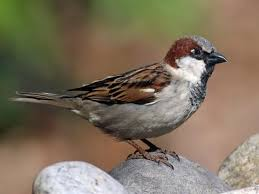Uttarakhand Switch to Hindi
Survey of Flood Affected Areas
Why in News?
Recently, Uttarakhand Chief Minister directed the officials to immediately identify "sensitive" villages and relocate the affected people to safer places in view of heavy rains and landslides in parts of the state.
Key Points
- According to the officials, Cloudbursts in Pauri Garhwal’s Toli, Bodh Kedar, and Tehri Garhwa’s Jakhana and Tingarh caused massive destruction.
- Action is being taken to streamline the electricity and drinking water arrangements in the disaster affected area and Rs 57,500 have also been given to livestock owners for animal loss.
Cloudbursts
- About:
- Cloudbursts are short-duration, intense rainfall events over a small area.
- It is a weather phenomenon with unexpected precipitation exceeding 100 mm/h over a geographical region of approximately 20-30 square km.
- In the Indian Subcontinent, it generally occurs when a monsoon cloud drifts northwards, from the Bay of Bengal or the Arabian Sea across the plains then on to the Himalaya that sometimes brings 75 millimeters of rain per hour.
- Occurrence:
- The relative humidity and cloud cover is at the maximum level with low temperature and slow winds because of which a high amount of clouds may get condensed at a very rapid rate and result in a cloudburst.
- As temperatures increase, the atmosphere can hold more and more moisture and this moisture comes down as a short very intense rainfall for a short duration probably half an hour or one hour resulting in flash floods in the mountainous areas and urban floods in the cities.
Uttarakhand Switch to Hindi
Study on House Sparrows
Why in News?
Recently, a study conducted by the Wildlife Institute of India (WII) emphasizes the unique bond between house sparrows and villagers in the high-altitude regions of the Indian Himalayas.
Key Points
- The study found that the house sparrow populations in Uttarakhand migrate with the local people, leaving the deserted summer villages when the locals move down to their winter villages and returning when the villagers come back in the summer.
- The study aims to understand the altitudinal movements and adaptation of house sparrows to the cold climatic conditions in these high-altitude areas.
- Adaptations of House Sparrows to High-Altitude Conditions:
- House sparrow populations in Uttarakhand are found to occur at altitudes as high as 3,500 meters, which is unique.
- The study found that the house sparrows of the high-altitude villages are larger in body size as an adaptation to the cold climatic conditions, compared to sparrows of lower elevations.
- Conservation Efforts and Awareness:
- To make local people aware about sparrow conservation, nest boxes have been distributed in many places, including Purola, Rudrapur, and Haridwar.
- The study is creating extensive awareness among local people about the importance of house sparrow conservation, and many people are actively engaged in the effort, monitoring nest boxes and contributing to data collection.
House Sparrows
- Scientific Name- Passer domesticus
- Conservation Status- Least Concern on the Red List of The International Union for Conservation of Nature (IUCN).
- Habitat and Distribution:
- The house sparrow is widespread across the world, inhabiting every continent, except Antarctica, China and Japan. It is native to Eurasia and North Africa.
- It is the State bird of Bihar and Delhi.
- It is known to stay close to human habitations, and is therefore among the most commonly found bird species in urban cities.
- Some of the causes for decline in its population are as follow:
- Unfriendly architecture of our homes.
- The use of chemical fertilisers in crops.
- Noise pollution.
- Exhaust fumes from vehicles.








%20MPPCS%202025%20Desktop%20E.jpg)
%20MPPCS%202025%20Mobile%20E%20(1).jpg)










.png)
.png)











 PCS Parikshan
PCS Parikshan


